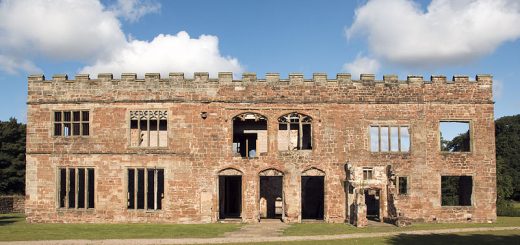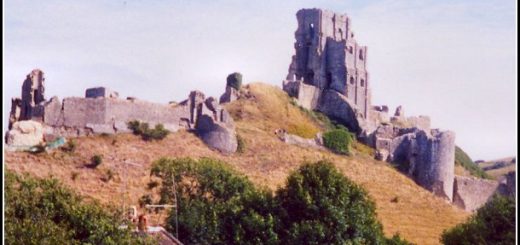Sedgemoor
Like many of the ancient battlefields of Britain, Sedgemoor – the site of the final defeat of the Duke of Monmouth’s ill armed rebel army – has gathered many folklore traditions and legends.
 The battle of Sedgemoor, 1685, was the last stand for the ‘pitchfork’ rebel army of the Duke of Monmouth. His army of supporters, which numbered around five thousand strong, were mainly armed with nothing more than farming implements. They were slaughtered mercilessly by the accurate gunfire of James II troops, as they attempted a night attack across the Sedgemoor marshland. The revolt started in June of that year, when the Duke tried to claim the throne, landing first at Lyme Regis in Dorset. The Duke managed to muster a fair amount of support from the Somerset people, who suffered terribly in the aftermath of the battle, during the trails known as the ‘Bloody Assizes’. The trails were presided over by the notorious Hanging Judge, George Jeffreys, 1st Baron Jeffreys of Wem, who sentenced hundreds of people to death.
The battle of Sedgemoor, 1685, was the last stand for the ‘pitchfork’ rebel army of the Duke of Monmouth. His army of supporters, which numbered around five thousand strong, were mainly armed with nothing more than farming implements. They were slaughtered mercilessly by the accurate gunfire of James II troops, as they attempted a night attack across the Sedgemoor marshland. The revolt started in June of that year, when the Duke tried to claim the throne, landing first at Lyme Regis in Dorset. The Duke managed to muster a fair amount of support from the Somerset people, who suffered terribly in the aftermath of the battle, during the trails known as the ‘Bloody Assizes’. The trails were presided over by the notorious Hanging Judge, George Jeffreys, 1st Baron Jeffreys of Wem, who sentenced hundreds of people to death.
Legends and Traditions
There are many stories of ghosts other traditions attached to the area, and there is little wonder as the events of the battle and the bloody aftermath, left a deep mark upon the local people.
One traditional tale tells of a local lad fighting with Monmouth’s army, who was captured after the battle. He was famed throughout Somerset as an exceptional runner, and to amuse themselves his captors told him that his life would be spared if he could keep pace with a horse. He rose to the task and managed to stay beside their finest horse at full gallop. This remarkable feat of athleticism was not to save his life however, for after the race he was put to the sword just the same, his captors reigning on their promise to spare his life. His sweetheart was so devastated by the news of her lovers death that she drowned herself in the shallow waters of the levels, her ghost remaining to haunt the levels accompanied by the sound of a man and a horse running at full pelt.
In her book Somerset Folklore Ruth L Tongue records a local tradition recorded in 1890, of how a researcher in the 18th century was told by a farmer that he had heard the sound of someone shouting “come over and fight” one foggy night in the vicinity of the battlefield. This was said to have been the battle cry of the Duke’s men, desperately shouting at James’s army to join them in battle as they were mown down by musket balls. Although the farmer believed that the source of the voice must have been a drunkard, the tale has now become the tradition that the battle site is haunted by the sound of ghostly cries.
The ghost of Monmouth is also said to appear on the battlefield either on the third or sixth of July, on the anniversary of the battle (the battle was on the night of the sixth of July). Monmouth actually managed to escape the battle with his life but was captured a few days later hiding in a ditch. He was executed for treason at the Tower of London on July the fifteenth. The Duke had calmly paid the axe man – Jack Ketch – to do a swift and clean job, but the axe man lost his nerve and took five bloody strikes to relieve the Duke of his life, much to the outrage of the massed crowd. Even after those five strikes the Duke’s head was still attached to his twitching body, finally separated from his shoulders with a knife, on the order of the Sheriff.




Re: Sedgemoor
Published on Wednesday 31 December 2008 – Shields Gazzette ‘Ghost Rider on the Road’
IN 1924, the writer and diarist Luke Speedwell set about journeying throughout the United Kingdom with friends in a motorcar he nicknamed The Happy Dragon.
Speedwell stopped at various places of historical interest, and dutifully told readers of a national newspaper of his experiences.
On one occasion Speedwell and his entourage passed through lonely Sedgemoor, in Somerset.
The journalist paused the vehicle momentarily and, pointing to his right at a windswept stretch of moor, said: "There is the very spot where Monmouth’s mob army, with their pikes and hayforks and matchlocks, met the King’s men.
"There was the rout, and the massacre of rebels. Many a good man fell. I wonder whether their spirits ever haunt this spot?"
It wasn’t long before Speedwell had good cause to ponder further over his words.
A dense mist had settled over the windswept stretch of road, and, conscious of the deepening gloom, he once again put The Happy Dragon into gear and proceeded on his way.
After half a mile, and just after midnight, Speedwell suddenly noticed something in front of him.
Coming towards the vehicle was a large horse and its rider, bathed in an eerie glow.
The man sitting upon the steed, he noticed, was garbed all in white.
Many a soul would have just carried on without stopping, but Speedwell’s journalistic curiosity got the better of him, and he slowed the vehicle down to a crawl.
It was then that he noticed something distinctly odd; even though the huge horse was within inches of the car as it passed, not a single sound came from its hooves as they moved upon the ground.
Speedwell wound down the window and attempted to speak to the horseman, but the ghostly figure paid him no heed at all.
With an expressionless face, staring straight ahead, he simply kept on riding.
By this juncture Speedwell was feeling distinctly nervous, and attempted to lighten the mood inside the bus by cracking a joke.
Once again he tried to hail the phantom rider, but still there was no response.
By this time, of course, Speedwell’s associates were feeling rather alarmed.
They too could sense that there was something quite other-worldly about the horse and the strangely-garbed man upon its back.
Speedwell decided enough was enough, and The Happy Dragon and its passengers, to quote his own words, "sped on like one possessed".
Of course, critics would argue that travelling along a lonely, windswept road out on the moors may well make the imagination work overtime.
The witnesses had already had the thought of ghosts and such-like implanted in their consciousness by Speedwell just minutes earlier, so could they have simply thought they saw something that was never really there?
It’s unlikely. All the witnesses saw the same thing; a spectral horseman dressed in white. They all agreed that its hooves had been eerily silent.
It is hard to believe that they suffered from some sort of collective hallucination when their testimonies dovetailed so accurately.
We do not need to look for sophisticated solutions from the world of pop-psychology; the truth is that Speedwell and the others saw a ghost, plain and simple. Who was the rider? We do not know.
Was he connected in some way with the battle that had taken place nearby long ago? Perhaps, but we cannot be sure.
All we can say with certainty is that a phantom horseman glided by that dark and misty night.
Whither he had come from, and to whither he was going, will probably forever remain a mystery.